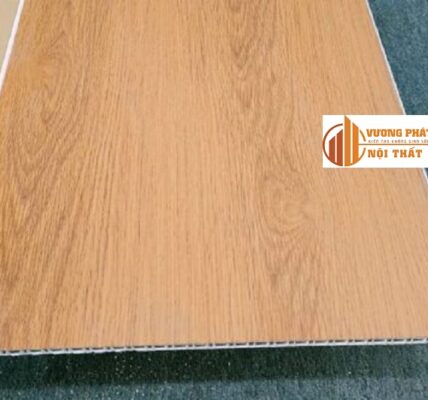Glass curtains, also known as frameless glazing systems, represent an innovative architectural feature that combines both functionality and aesthetics. Page baobinhduong.top share these systems consist of large, frameless glass panels that are designed to create seamless transitions between indoor and outdoor spaces. Unlike traditional windows or doors, glass curtains offer unobstructed views, enhancing the visual appeal of any building while allowing for ample natural light.
Introduction to Glass Curtains: Benefits, Installation, and Maintenance
One of the primary functions of glass curtains is to provide a transparent barrier that effectively separates different environments without compromising on light or visibility. This makes them particularly popular in modern architecture, where open-plan designs and a connection with nature are highly valued. Whether used in residential homes, commercial buildings, or public spaces, glass curtains contribute to an airy and spacious ambiance.
Beyond their aesthetic appeal, glass curtains offer numerous functional benefits. They are excellent insulators, helping to maintain indoor temperatures by preventing heat loss in the winter and minimizing heat gain in the summer. Additionally, they offer sound insulation, which is particularly beneficial in urban settings where noise pollution can be a concern. The use of high-quality materials and advanced manufacturing techniques ensures that glass curtains are durable and secure, capable of withstanding various weather conditions.
The market offers a variety of glass curtain systems to suit different needs and preferences. Some of the common types include sliding glass curtains, folding glass curtains, and fixed glass panels. Each type has its unique features and advantages. Sliding glass curtains, for instance, are ideal for spaces that require easy access and ventilation, while folding glass curtains can be fully retracted to open up an entire wall. Fixed glass panels, on the other hand, provide a permanent, unobstructed view, making them perfect for showcasing scenic landscapes.
Benefits of Glass Curtains
Another key benefit is the provision of unobstructed views. Glass curtains are designed to maximize visibility, offering panoramic views of the outdoors. This feature is particularly advantageous for properties located in scenic areas, as it allows residents and occupants to enjoy the natural beauty surrounding them without any visual barriers.
From an aesthetic standpoint, glass curtains add a modern and sleek touch to any building. Their minimalist design complements various architectural styles and interior designs, making them a versatile addition to both contemporary and traditional spaces. Additionally, glass curtains can be customized in terms of size, shape, and frame color, allowing for tailored solutions that meet specific design preferences.
The installation of glass curtains can also lead to an increase in property value. Prospective buyers and tenants are often drawn to properties with abundant natural light and stunning views, making glass curtains a valuable investment. Furthermore, the seamless integration of indoor and outdoor living spaces facilitated by glass curtains enhances the overall appeal of a property.
Glass curtains are particularly beneficial for creating smooth transitions between different areas. Whether you’re looking to merge an indoor living room with an outdoor patio or connect an office space with a garden, glass curtains provide a flexible and practical solution. This ability to create fluid spaces is ideal for both residential living and commercial environments, promoting a sense of openness and connectivity.
In summary, the advantages of installing glass curtains extend beyond mere aesthetics. They improve energy efficiency, enhance natural light, and provide unobstructed views, all while increasing the property’s market value and promoting seamless transitions between indoor and outdoor spaces.
Types of Glass Curtains
Glass curtains come in a variety of types, each tailored to specific needs and applications. The primary categories include frameless, framed, sliding, and folding systems. Understanding the unique features, advantages, and potential drawbacks of each type can help in selecting the most suitable option for various settings.
Frameless Glass Curtains: As the name suggests, frameless
GlassCurtains are devoid of any visible frames around the glass panels. This type offers an unobstructed view and a sleek, minimalist aesthetic, making it ideal for modern architectural designs. The main advantage of frameless systems is their ability to create a seamless transition between indoor and outdoor spaces. However, they might lack the robustness of framed systems, especially in areas subjected to high wind loads or heavy usage.
Framed Glass Curtains: Framed glass curtains incorporate a visible framework around each glass panel, providing additional structural support. This type is often chosen for its durability and enhanced security features. While framed systems may not offer the same level of visual transparency as frameless ones, they are well-suited for commercial facades and high-traffic areas where stability and safety are paramount. The frames can be customized in various finishes to complement the surrounding architecture.
Sliding Glass Curtains: Sliding glass curtains consist of panels that move horizontally along a track system. This design is particularly advantageous for spaces with limited room for opening, such as balconies and patios. Sliding systems provide ease of operation and can be configured to open fully or partially, offering flexibility in ventilation and access. However, they may require regular maintenance to ensure the smooth functioning of the track mechanisms.
Folding Glass Curtains: Also known as bi-fold or accordion glass doors, folding glass curtains feature panels that fold and stack neatly to the side when opened. This type is highly versatile, allowing for wide openings and maximizing the connection between indoor and outdoor environments. Folding systems are popular for residential balconies, terraces, and large interior partitions. Despite their versatility, they may involve a more complex installation process and require adequate space for the panels to fold back.
Read more articles: Frameless glass door Thailand should choose
In conclusion, the choice of glass curtains depends on specific functional and aesthetic requirements. Frameless systems are perfect for contemporary designs, framed curtains offer superior durability, sliding systems save space, and folding curtains provide maximum openness. Each type serves distinct purposes, making it essential to assess the individual needs of the project before making a decision.




